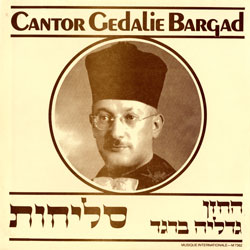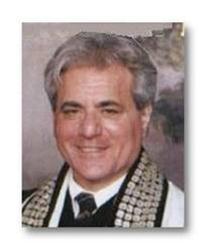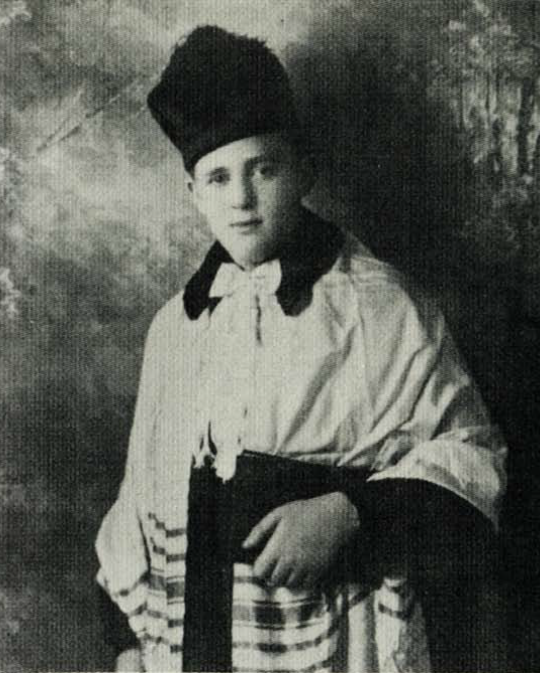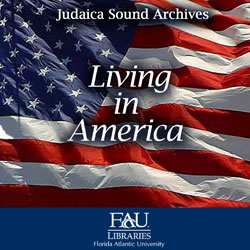
One family’s ancestor remembered…a shared culture preserved.
The music of the traditional synagogue in America has strong roots in the culture and shtetls of 19th and early 20th century Eastern Europe. Like many of the greats of the Golden Era of Hazzanut Cantor Gedalie Bargad was a gifted hazzan who grew out of the chassidic environment. Read More About This…

Equally at home on the opera stage and in the synagogue, Stephen Texon’s successful and distinguished singing career spans decades. Read More About This…
Ma Nishtana (מה נשתנה) is also known as The Four Questions.
(מה נשתנה) is also known as The Four Questions.
Recited by the youngest child at the table it evokes our own childhood experience and the pride we felt participating in the family seder.
Sung by Fran Avni’s Singing Children’s Chorus Read More About This…
 Digital Access & Online Collections, Events & General Interest, Judaic Collection, Music History & Performer Highlights
|
Digital Access & Online Collections, Events & General Interest, Judaic Collection, Music History & Performer Highlights
|  Adir Hu, Chad Gadya, Chaim Parchi, Dayenu, Deborah Katchko-Gray, Echad Mi Yodea, Fran Avni, Haggadah, Ma Nishtana, passover music, Pesach, Ralph Levitan, Safam, seder songs
Adir Hu, Chad Gadya, Chaim Parchi, Dayenu, Deborah Katchko-Gray, Echad Mi Yodea, Fran Avni, Haggadah, Ma Nishtana, passover music, Pesach, Ralph Levitan, Safam, seder songs
 For five generations, the Lind Family, descended from Belzer Hassidim in Galicia, sang the songs of the synagogue. It was from this lineage that Joshua Lind (1890—1973) rose to prominence as a composer, cantor and teacher. Joining his father’s synagogue choir at the age of 5, young David Lind quickly became a Cantorial wunderkind touring the country and recording for RCA Victor.
For five generations, the Lind Family, descended from Belzer Hassidim in Galicia, sang the songs of the synagogue. It was from this lineage that Joshua Lind (1890—1973) rose to prominence as a composer, cantor and teacher. Joining his father’s synagogue choir at the age of 5, young David Lind quickly became a Cantorial wunderkind touring the country and recording for RCA Victor.
Together with his brothers, Murray and Phil, David formed the Lind Brothers Trio in 1937. They became quite popular performing a repertoire especially created for them by their father, Cantor Joshua Lind. Read More About This…
 Now you can celebrate the 4th of July and your Jewish heritage at the same time.
Now you can celebrate the 4th of July and your Jewish heritage at the same time.
This new compilation of songs from the Judaica Sound Archives at Florida Atlantic University Libraries in Boca Raton, FL is about the American Jewish experience.
It contains Yiddish songs recorded during the early 20th century and expresses a Jewish immigrant perspective on New York, Coney Island and other things distinctly American. Read More About This…
 Digital Access & Online Collections, Events & General Interest, Judaic Collection, Music History & Performer Highlights
|
Digital Access & Online Collections, Events & General Interest, Judaic Collection, Music History & Performer Highlights
|  Aaron Lebedeff, Alma Gluck, America, Benny Bell, Frank Sinatra, Irving Berlin, Josef Feldman, Judy Caplan Ginsburgh, Molly Picon, Pesach Burstein, Seymour Rexite
Aaron Lebedeff, Alma Gluck, America, Benny Bell, Frank Sinatra, Irving Berlin, Josef Feldman, Judy Caplan Ginsburgh, Molly Picon, Pesach Burstein, Seymour Rexite




